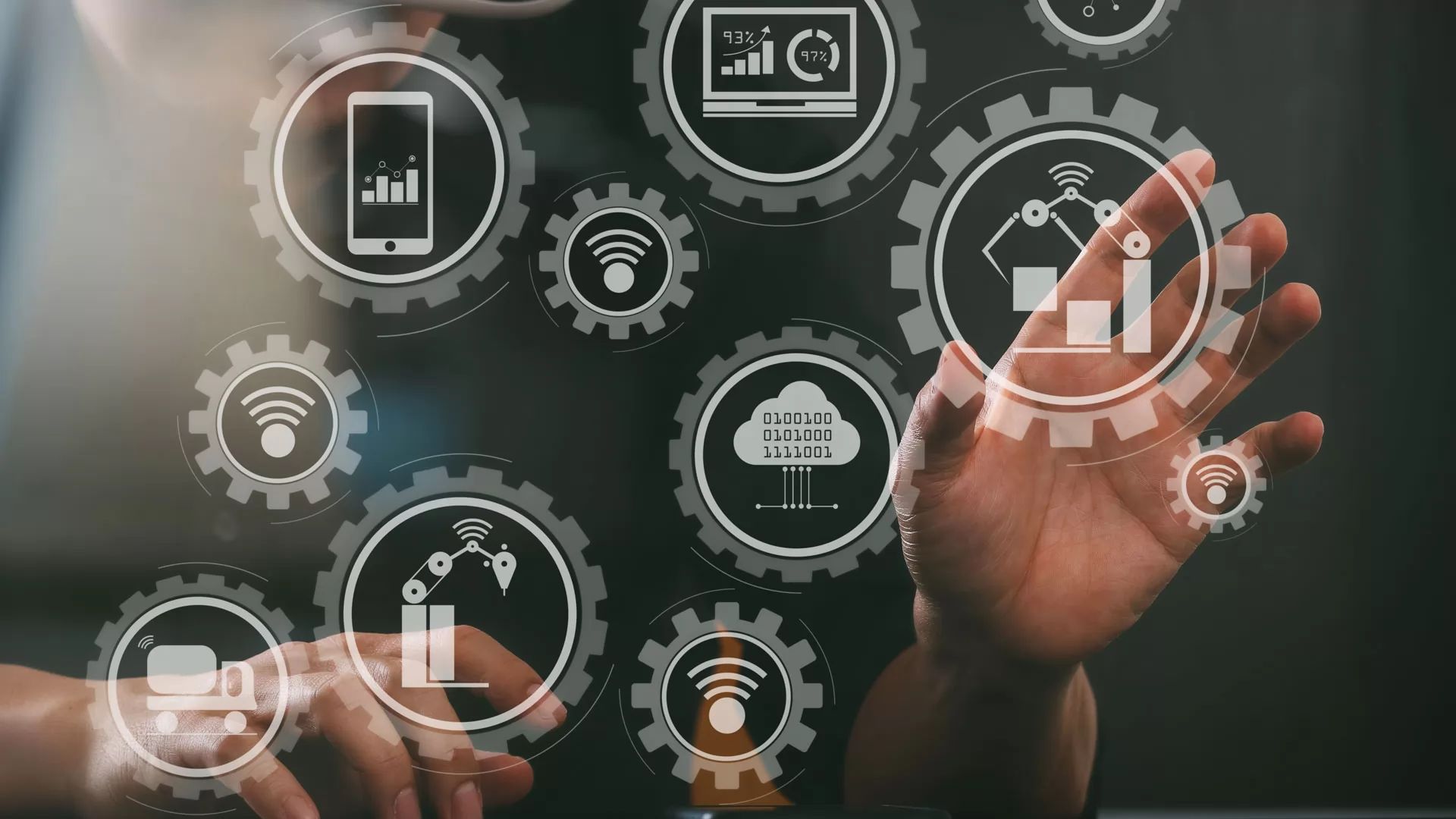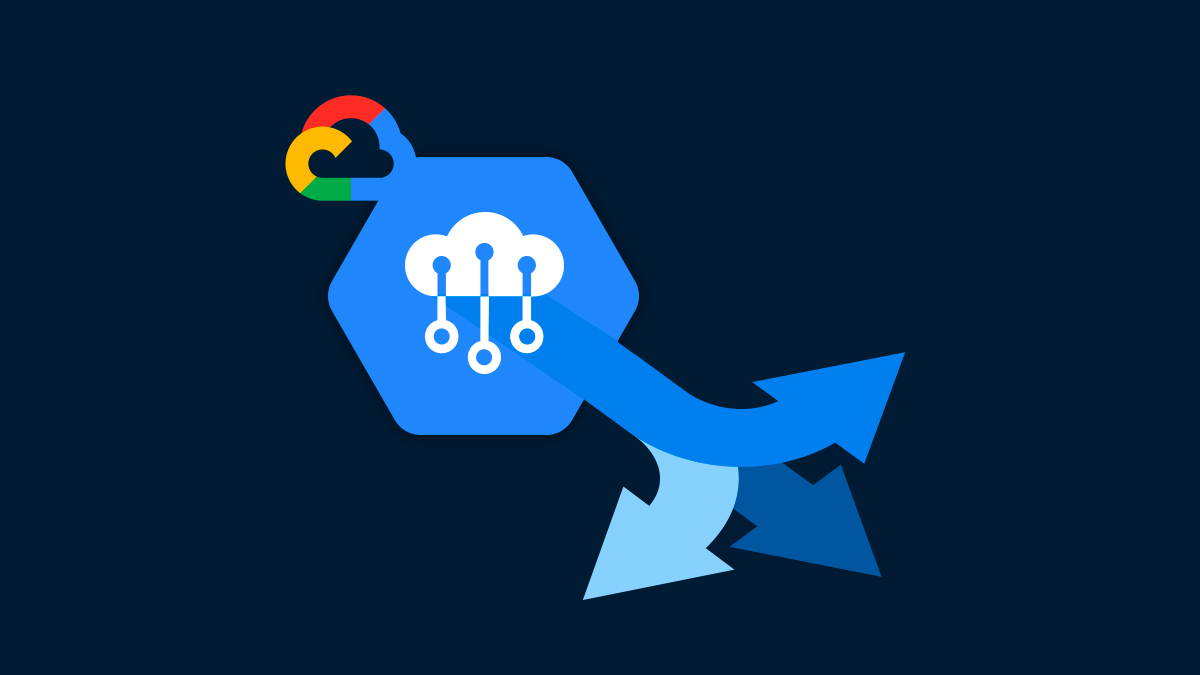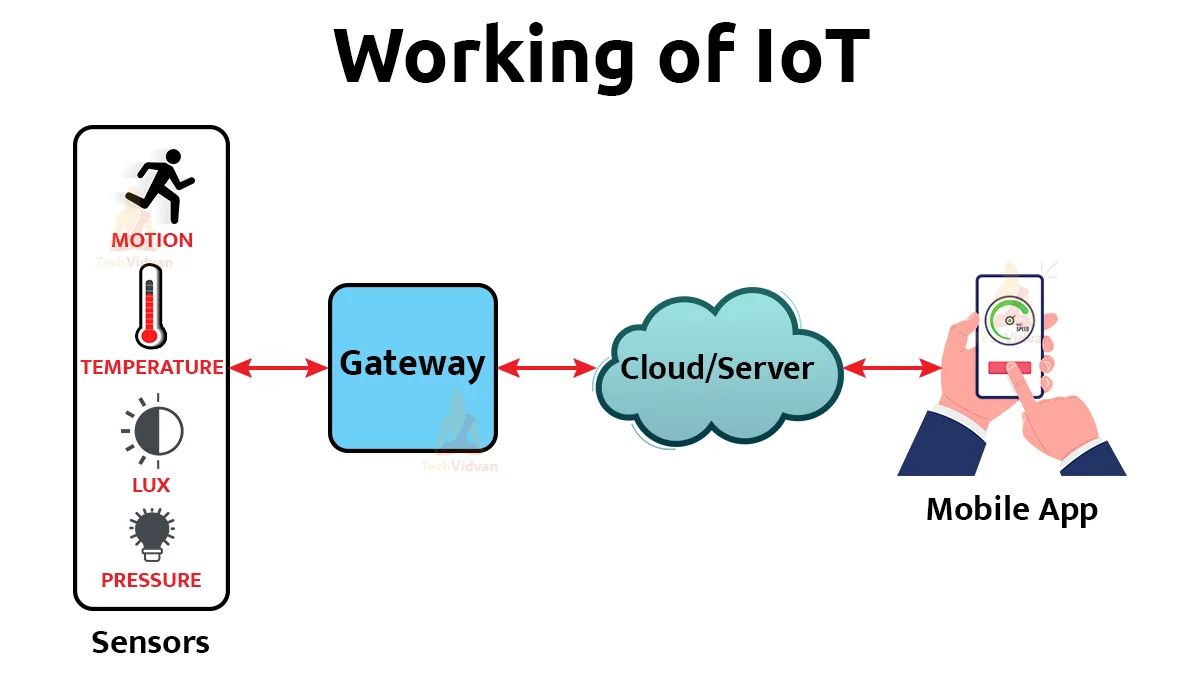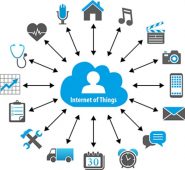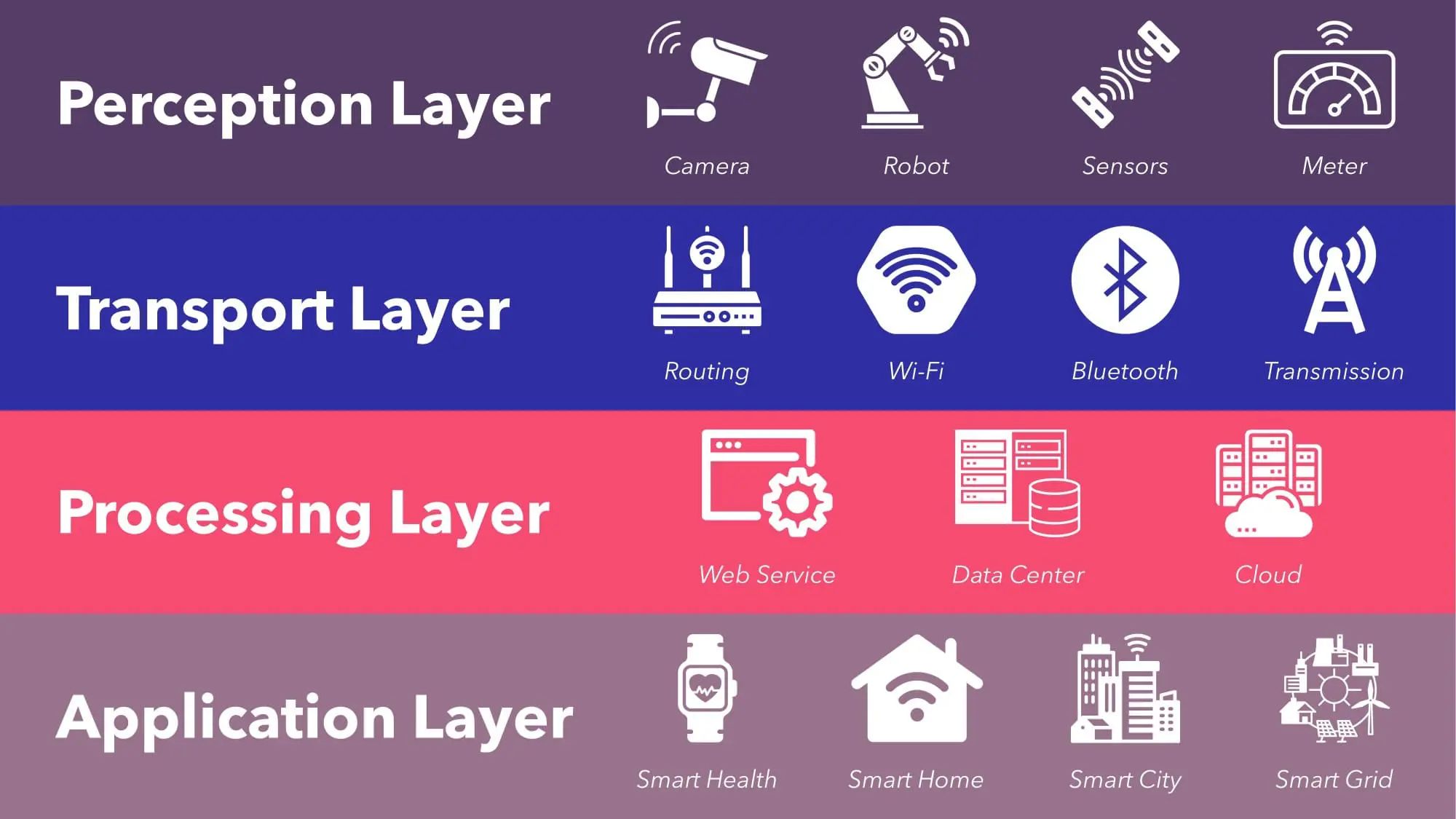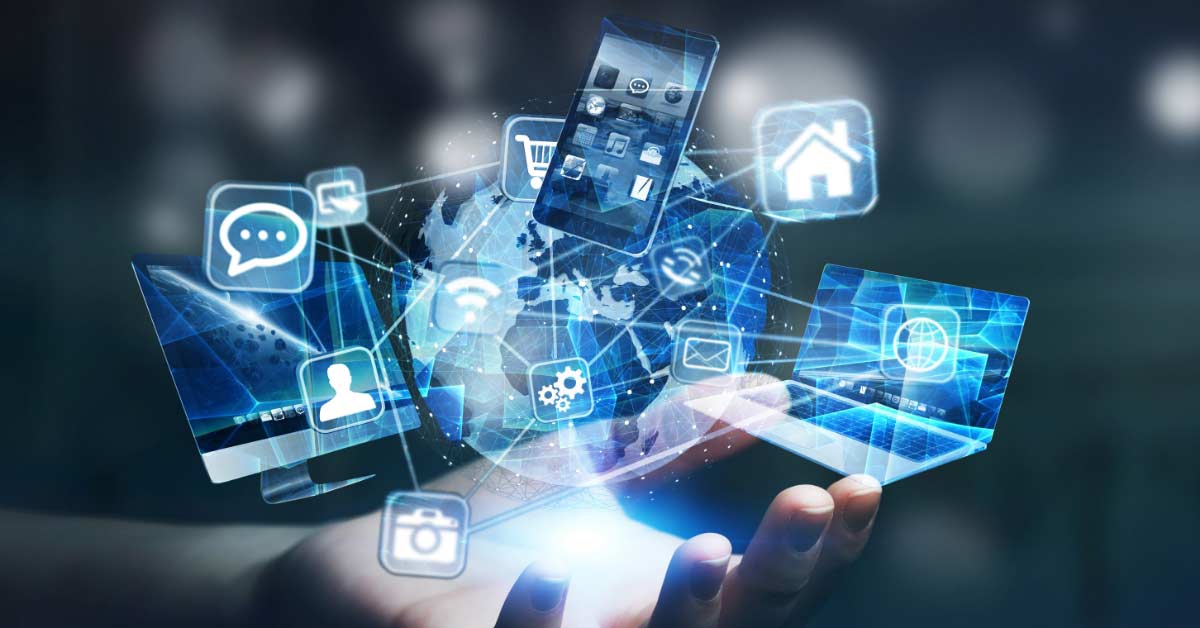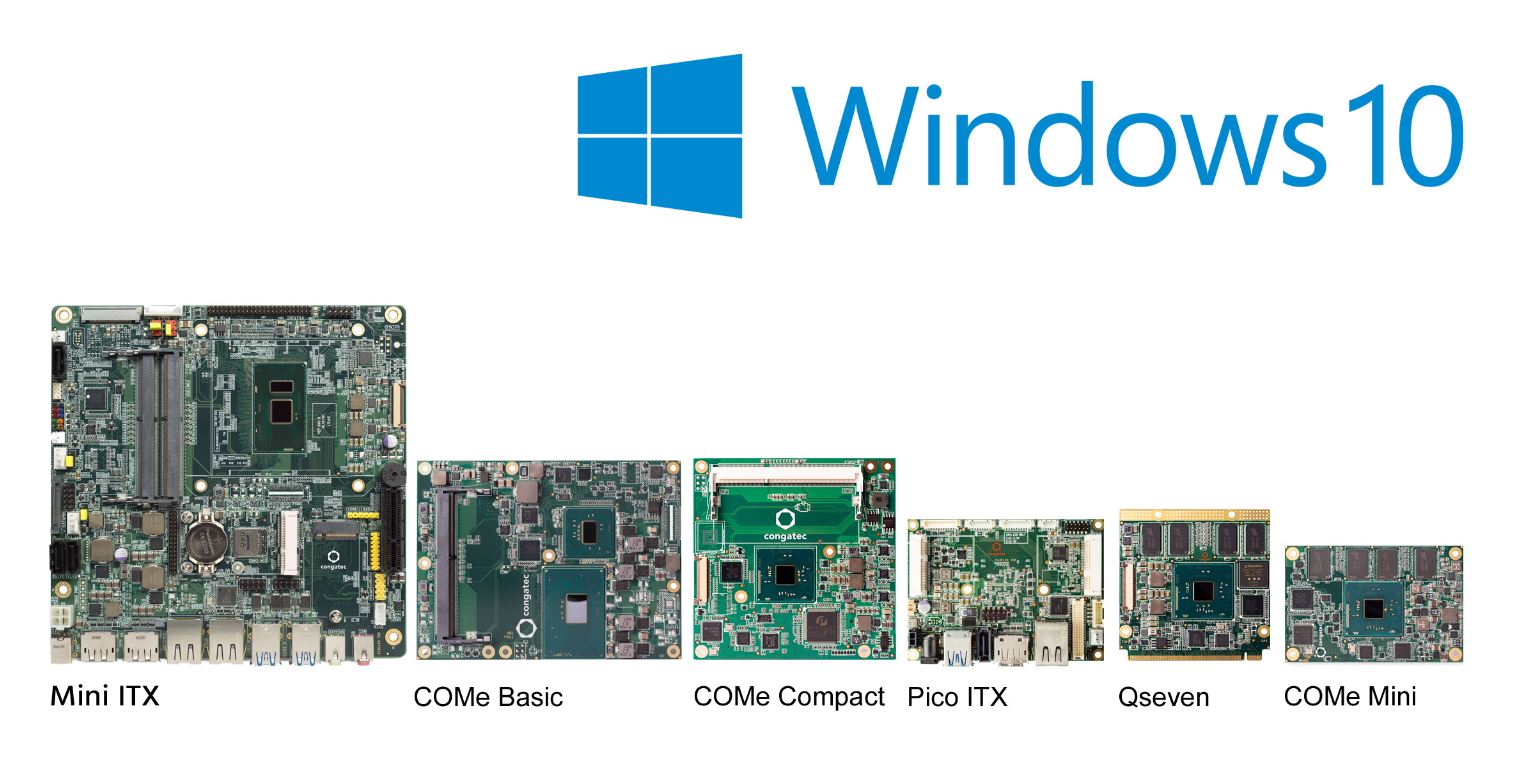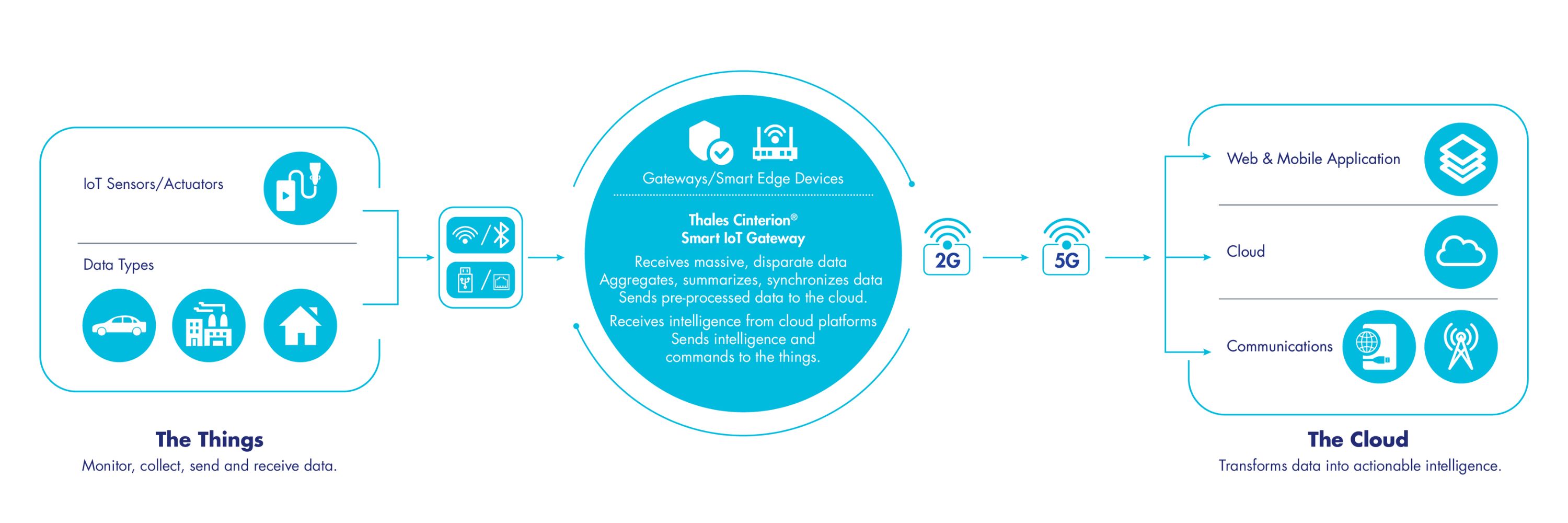Introduction
Welcome to the world of interconnected devices and cloud computing. In today’s rapidly advancing technological landscape, the Internet of Things (IoT) has emerged as a game-changer, revolutionizing the way we live and work. IoT refers to the network of physical devices, vehicles, appliances, and other objects embedded with sensors, software, and connectivity, enabling them to collect and exchange data over the internet.
At the core of this IoT revolution is the cloud, which serves as the infrastructure for storing, managing, and analyzing the massive amounts of data generated by these connected devices. The cloud, or cloud computing, is a distributed network of servers that offers infrastructure, platforms, and software services over the internet.
So, what benefits does connecting IoT devices to the cloud bring? One of the key advantages is the ability to collect and analyze real-time data that can lead to valuable insights and informed decision-making. This data can include anything from temperature and humidity readings to vehicle performance metrics or home security information. By leveraging the power of the cloud, businesses can unlock the potential of this data to optimize processes, improve efficiency, and enhance the overall user experience.
The process of connecting an IoT device to the cloud involves a series of steps, which we will explore in more detail. These steps include hardware and software requirements, device configuration, cloud connectivity setup, and data transmission and management.
In this article, we will guide you through each of these steps, providing you with the knowledge and understanding needed to connect your IoT devices to the cloud successfully. Whether you are a business looking to implement IoT solutions or an individual interested in exploring the world of connected devices, this article will help you navigate the exciting path ahead.
What is IoT?
The Internet of Things (IoT) refers to the network of interconnected physical devices, vehicles, buildings, and other objects that are embedded with sensors, software, and connectivity to collect and exchange data. These devices, often referred to as “smart” devices, communicate with each other and with the cloud to provide a wide range of benefits and functionalities.
IoT enables seamless communication and data sharing between devices, creating a vast ecosystem of interconnected technologies. These devices can range from simple everyday objects, such as smart thermostats and wearable fitness trackers, to more complex systems like industrial machinery and smart cities infrastructure.
The core concept behind IoT is to enable these devices to interact and share information without human intervention, enhancing efficiency, improving decision-making, and enabling new capabilities. By incorporating sensors, IoT devices are capable of gathering data about their environment, such as temperature, humidity, light levels, and motion. This data can be utilized for a variety of purposes, including monitoring and control, predictive maintenance, optimization of processes, and improving overall user experience.
IoT has the potential to impact various industries and sectors, including healthcare, manufacturing, transportation, agriculture, and more. In healthcare, for example, IoT devices can be used for remote patient monitoring, allowing doctors to track vital signs and health parameters in real-time. In manufacturing, IoT can enable predictive maintenance by monitoring equipment conditions and detecting potential failures before they happen, reducing downtime and improving productivity.
With the proliferation of IoT devices and the growing adoption of smart technologies, the amount of data generated is on an exponential rise. This massive amount of data, often referred to as “big data,” requires advanced processing and analysis capabilities, which is where the cloud comes into play. By connecting IoT devices to the cloud, organizations can leverage the power of cloud computing to store, manage, and analyze this data efficiently.
The integration of IoT and the cloud opens up a world of possibilities, enabling businesses and individuals to harness the potential of interconnected devices and real-time data. As we delve into the steps of connecting IoT devices to the cloud in the following sections, you will see how this integration can bring numerous benefits and transform the way we live and work.
What is the Cloud?
The cloud, in the context of technology, refers to a network of remote servers that are accessed over the internet to store, manage, and process data. Instead of relying on local storage and computing resources, the cloud provides a scalable and flexible platform for businesses and individuals to access a wide range of services and resources on-demand.
Cloud computing offers three primary service models: Infrastructure as a Service (IaaS), Platform as a Service (PaaS), and Software as a Service (SaaS). Each model provides different levels of abstraction and functionality, allowing users to choose the most suitable option based on their needs.
With IaaS, users have access to virtualized computing resources, such as servers, storage, and networking components, which they can configure and manage as per their requirements. PaaS, on the other hand, provides a higher-level platform for developing, testing, and deploying applications without the need to manage the underlying infrastructure. SaaS offers ready-to-use software applications, accessible over the internet, eliminating the need for installation and maintenance.
The benefits of cloud computing are numerous. Firstly, scalability is a significant advantage, as cloud resources can be quickly scaled up or down based on demand. This allows businesses to adapt to fluctuating workloads and ensures optimal resource utilization. Additionally, the cloud offers high availability and reliability, with data stored across multiple servers and locations, reducing the risk of data loss. Cloud services are also cost-effective, as users pay only for the resources they consume, eliminating the need for large upfront investments in infrastructure.
Security is a critical concern when it comes to cloud computing. Cloud service providers implement robust security measures to protect data and infrastructure from unauthorized access and cyber threats. They also handle routine maintenance, updates, and backups, reducing the burden on users and allowing them to focus on their core business activities.
When it comes to IoT, the cloud plays a vital role in managing and processing the massive amounts of data generated by connected devices. By leveraging cloud computing, organizations can store and analyze this data to derive valuable insights and make informed decisions. The cloud also facilitates remote access and control of IoT devices, allowing users to interact with their devices from anywhere at any time.
In the upcoming sections, we will explore the steps involved in connecting IoT devices to the cloud, enabling businesses and individuals to harness the power of this integration and unlock the true potential of IoT.
Benefits of Connecting IoT Devices to the Cloud
The integration of IoT devices with the cloud brings a multitude of benefits, enabling businesses and individuals to harness the power of connected technologies and real-time data. Let’s explore some of the key advantages of connecting IoT devices to the cloud:
1. Scalability and Flexibility:
By connecting IoT devices to the cloud, organizations can easily scale their infrastructure and accommodate a growing number of devices. The cloud offers virtually unlimited storage and computing power, allowing businesses to handle increasing amounts of data without having to invest in additional hardware and resources. This scalability and flexibility are crucial for managing IoT deployments of varying sizes and accommodating future expansion.
2. Real-time Data Analysis:
IoT devices generate a massive volume of data in real-time. By connecting these devices to the cloud, businesses can collect, store, and analyze this data in real-time. Cloud platforms provide powerful analytics tools and machine learning capabilities, allowing organizations to extract insights and make informed decisions based on the data generated by IoT devices. Real-time data analysis enables proactive monitoring, predictive maintenance, and the identification of new business opportunities.
3. Enhanced Security and Data Privacy:
The cloud offers robust security measures to protect data transmitted from IoT devices. Cloud service providers implement encryption, access controls, and authentication protocols to ensure the integrity and privacy of data. By leveraging the security features of the cloud, organizations can mitigate security risks associated with IoT deployments and ensure that sensitive information remains protected.
4. Remote Device Management:
Connecting IoT devices to the cloud enables remote device management, allowing businesses and individuals to monitor and control their devices from anywhere at any time. Through cloud-based dashboards and control panels, users can remotely configure device settings, perform firmware updates, and troubleshoot issues. This remote management capability improves operational efficiency, reduces maintenance costs, and enhances user experience.
5. Integration and Interoperability:
IoT devices often come from various manufacturers and utilize different communication protocols. Connecting these devices to the cloud provides a standardized platform for integration and interoperability. Cloud platforms offer APIs and tools that enable seamless integration with other systems, applications, and services. This interoperability allows businesses to create comprehensive IoT solutions by combining data from multiple devices and sources.
Overall, connecting IoT devices to the cloud empowers businesses and individuals to unlock the full potential of connected technologies. It enables real-time data analysis, scalability, enhanced security, remote device management, and integration capabilities. In the following sections, we will delve into the specific steps required to connect IoT devices to the cloud, providing practical guidance for implementing this powerful integration.
Steps to Connect IoT Device to the Cloud
Connecting an IoT device to the cloud involves a series of steps to ensure a seamless and secure connection. Let’s explore the step-by-step process of connecting an IoT device to the cloud:
Step 1: Hardware Requirements
The first step is to ensure that the IoT device you are working with is equipped with the necessary hardware components for cloud connectivity. This may include a network interface, such as Wi-Fi or Ethernet, and appropriate sensors or actuators to collect and transmit data. Check the device’s documentation or specifications to confirm its compatibility with cloud connectivity.
Step 2: Software Requirements
Next, you need to ensure that the IoT device’s firmware or software supports cloud connectivity. This may involve installing or updating the device’s firmware to the latest version that includes cloud connectivity features. Additionally, you may need to install any necessary drivers or libraries for the device to communicate with the cloud platform you will be using.
Step 3: Setting up the IoT Device
Once the hardware and software requirements are met, it’s time to set up the IoT device. This typically involves connecting the device to a power source and configuring any necessary network settings, such as Wi-Fi credentials or IP addresses. Follow the device’s documentation to ensure the correct setup process.
Step 4: Configuring Cloud Connectivity
The next step is to configure the cloud connectivity for your IoT device. This involves creating an account on the cloud platform you will be using and setting up the necessary credentials for authenticating and connecting the device to the platform. These credentials may include API keys, tokens, or other authentication mechanisms provided by the cloud platform.
Step 5: Data Transmission and Management
Once the IoT device is connected to the cloud, you can start transmitting and managing data. This may involve configuring data transmission protocols, such as MQTT or HTTP, to send data from the device to the cloud platform. Additionally, you may need to define data storage and management policies, such as how long to retain data on the cloud and how to handle different types of data.
It is important to note that the specific steps and requirements may vary depending on the IoT device and cloud platform you are using. It is always recommended to refer to the documentation and resources provided by the device manufacturer and cloud platform for detailed instructions.
By following these steps, you can successfully connect your IoT device to the cloud, enabling seamless communication, data transmission, and management. This integration paves the way for leveraging the power of real-time data analysis, remote device management, scalability, and enhanced security, as discussed in the previous sections.
Step 1: Hardware Requirements
Before connecting an IoT device to the cloud, it is crucial to ensure that the device has the necessary hardware components for cloud connectivity. The specific hardware requirements may vary depending on the device and its intended use. Here are some key considerations to keep in mind:
1. Network Interface:
One of the primary hardware requirements for cloud connectivity is a network interface. This can be in the form of Wi-Fi, Ethernet, cellular, or other communication capabilities that allow the device to connect to the internet. The network interface enables the device to communicate with the cloud platform and transmit data securely over the network.
2. Sensors and Actuators:
Depending on the device’s purpose and functionality, it may require specific sensors or actuators to collect and transmit data to the cloud. Sensors can include temperature sensors, humidity sensors, motion sensors, GPS modules, or any other sensors necessary to capture relevant information about the device’s environment. Actuators, on the other hand, enable the device to perform actions based on commands received from the cloud, such as controlling motors or switches.
3. Power Source:
An essential consideration for IoT devices is the availability of a reliable power source. Depending on the device’s location and usage scenario, this can range from battery power to a constant electrical supply. It is crucial to select a power source that aligns with the device’s power requirements and expected operational duration, ensuring uninterrupted connectivity to the cloud.
4. Compatibility:
When selecting an IoT device for cloud connectivity, it is essential to consider its compatibility with the cloud platform and protocols you intend to use. Ensure that the device is compatible with the necessary communication protocols, such as MQTT or HTTP, supported by the cloud platform. The compatibility ensures seamless integration and effective data transmission between the device and the cloud.
It is advisable to consult the device manufacturer’s documentation or guidelines to identify the specific hardware requirements for connecting the device to the cloud. Manufacturers often provide detailed information on hardware compatibility, recommended network interfaces, and any additional sensors or components that may be required.
By ensuring that your IoT device meets the necessary hardware requirements, you lay a solid foundation for successful cloud connectivity. This sets the stage for transmitting data, managing device interactions, and leveraging the power of cloud computing and analytics. In the next step, we will explore the software requirements needed to facilitate the connection between the IoT device and the cloud platform.
Step 2: Software Requirements
Once you have ensured that your IoT device meets the necessary hardware requirements, the next step in connecting the device to the cloud is to address the software requirements. The software plays a crucial role in enabling seamless communication between the device and the cloud platform. Here are some key considerations for the software requirements:
1. Firmware or Software Update:
Firstly, check if the IoT device’s firmware or software supports cloud connectivity. If not, you may need to update the firmware to the latest version that includes cloud connectivity features. Typically, device manufacturers release firmware updates to add new functionalities or address any security or compatibility issues. This update ensures that your device is equipped with the necessary software to establish a connection with the cloud.
2. Communication Protocols:
Ensure that the IoT device supports the communication protocols required by the chosen cloud platform. Common protocols used for IoT cloud connectivity include MQTT (Message Queuing Telemetry Transport), HTTP (Hypertext Transfer Protocol), and CoAP (Constrained Application Protocol). These protocols enable seamless data transmission between the device and the cloud platform. Check the device’s documentation or consult the manufacturer to determine the supported communication protocols.
3. Authentication and Security:
Consider the authentication and security mechanisms required for the IoT device to connect securely to the cloud platform. This may involve using cryptographic protocols and certificates to authenticate the device and ensure that the data transmitted between the device and the cloud is secure. It is crucial to follow security best practices and consult the cloud platform’s documentation for guidance on implementing robust authentication and encryption mechanisms.
4. API or SDK Integration:
If the cloud platform provides an API (Application Programming Interface) or SDK (Software Development Kit), familiarize yourself with the integration process. APIs and SDKs allow developers to interface with the cloud platform’s services and functionality easily. This integration enables data transmission, device management, and interaction with other cloud services. Follow the documentation provided by the cloud platform to integrate the necessary software components into your IoT device.
It is essential to stay up-to-date with software updates released by the device manufacturer and the cloud platform provider. Regularly checking for firmware and software updates ensures that your IoT device benefits from the latest features, bug fixes, and security enhancements, ensuring a reliable and secure connection to the cloud.
By addressing the software requirements, you ensure that your IoT device is equipped with the necessary software components to establish a secure and seamless connection with the chosen cloud platform. In the next step, we will explore how to set up and configure the IoT device for cloud connectivity.
Step 3: Setting up the IoT Device
After ensuring that your IoT device meets the necessary hardware and software requirements, the next step is to set up the device for cloud connectivity. This step involves configuring the device and its network settings to establish a connection with the cloud platform. Here are the key considerations for setting up the IoT device:
1. Power and Connectivity:
Connect the IoT device to a reliable power source. Depending on the device’s power requirements and the intended usage scenario, this can be a direct electrical supply or a battery. Ensure that the power source is capable of providing a stable and uninterrupted power supply, as this is crucial for maintaining the device’s connection to the cloud.
Next, establish the necessary network connectivity for the IoT device. This can involve connecting the device to a Wi-Fi network or configuring a wired Ethernet connection. Follow the device’s documentation to set up the network connection, including entering the Wi-Fi credentials or configuring IP addresses if necessary. The device should be connected to the same network that your cloud platform is accessible on.
2. Device Configuration:
Once the power and network connections are established, it is time to configure the IoT device. This may involve setting up parameters such as device identifiers, device names, or location information. Follow the instructions provided by the device manufacturer to configure these settings, which are often accessible through a user interface or a configuration file.
3. Testing and Verification:
After the initial configuration, it is recommended to test the device’s connectivity and ensure it can communicate with the cloud platform. This can involve sending test data or commands from the device to the cloud, or vice versa, and verifying the successful transmission and reception of data. Conducting rigorous testing helps identify and resolve any potential connectivity or compatibility issues before deploying the device in a production environment.
It is important to consult the device manufacturer’s instructions and guidelines throughout the setup process. They will provide specific steps and considerations for your particular IoT device model.
By setting up the IoT device for cloud connectivity, you pave the way for seamless communication between the device and the cloud platform. In the next step, we will explore the process of configuring the cloud connectivity itself, allowing the device to establish a secure and reliable connection to the cloud.
Step 4: Configuring Cloud Connectivity
After setting up the IoT device, the next step is to configure its connectivity to the cloud. This involves creating an account on the chosen cloud platform and setting up the necessary credentials to authenticate and establish a secure connection. Here are the key considerations for configuring cloud connectivity:
1. Cloud Platform Selection:
Choose a cloud platform that best suits your needs and requirements. There are several cloud platforms available, such as Amazon Web Services (AWS), Microsoft Azure, Google Cloud Platform, and IBM Cloud. Consider factors such as the platform’s features, scalability, pricing, and compatibility with the IoT device and communication protocols you are using.
2. Account Creation:
Create an account on the selected cloud platform. This typically involves providing basic information, such as your name, email address, and organization details. Follow the platform’s registration process, which may require verification through email or other means to confirm your identity.
3. Device Authentication:
Once you have created an account on the cloud platform, you need to set up device authentication credentials. This includes generating API keys, tokens, or certificates that will be used by the IoT device to establish a secure connection with the cloud. Follow the cloud platform’s documentation to understand the authentication mechanisms and generate the necessary credentials.
4. Connection Configuration:
Configure the IoT device to establish a connection with the cloud platform using the authentication credentials generated in the previous step. This may involve providing the device with the necessary API keys, tokens, or certificates to authenticate and communicate with the cloud. Follow the device’s documentation to understand the specific configuration process required for your device and cloud platform combination.
5. Cloud Integration:
Explore the integration options provided by the cloud platform to connect your IoT device. This may involve using APIs, SDKs, or pre-built connectors to facilitate the communication between the device and the cloud services. Consider the specific functionalities you want to utilize, such as data storage, real-time data analytics, or device management, and explore the relevant integration options provided by the cloud platform.
It is important to familiarize yourself with the cloud platform’s documentation and guidelines throughout the configuration process. Each platform may have its specific configuration steps and requirements, so follow the instructions provided to ensure successful cloud connectivity.
By configuring the cloud connectivity for your IoT device, you establish a secure and reliable connection between the device and the chosen cloud platform. In the next step, we will explore the transmission and management of data between the IoT device and the cloud platform.
Step 5: Data Transmission and Management
Once your IoT device is connected to the cloud, the next step is to establish data transmission and management between the device and the cloud platform. This step involves setting up protocols for data exchange, defining storage and management policies, and leveraging the capabilities of the cloud platform for data analysis and processing. Let’s explore the key considerations for data transmission and management:
1. Data Transmission Protocols:
Choose the appropriate data transmission protocol for sending data from the IoT device to the cloud platform. Commonly used protocols include MQTT (Message Queuing Telemetry Transport), HTTP (Hypertext Transfer Protocol), or CoAP (Constrained Application Protocol). Consider factors such as the device’s capabilities, data size, bandwidth requirements, and real-time or asynchronous communication needs when selecting the protocol.
2. Data Payload Structure:
Define the structure and format of the data payload transmitted from the IoT device to the cloud platform. This may involve specifying the data fields, their types, and any additional metadata required for proper interpretation and processing of the data. Consider standard data formats or industry-specific formats, such as JSON (JavaScript Object Notation) or XML (eXtensible Markup Language), based on your use case and the capabilities of the cloud platform.
3. Data Storage and Management:
Determine the data storage and management policies for the data received from the IoT device. This includes decisions on data retention, archival, and deletion. Define how long the data should be stored on the cloud platform and specify any specific data storage and backup requirements. Additionally, consider data management practices such as data encryption, access controls, and privacy policies to ensure the security and compliance of the stored data.
4. Analytics and Processing:
Leverage the capabilities of the cloud platform for data analytics and processing. Many cloud platforms offer powerful tools and services for real-time data analytics, machine learning, and predictive analytics. Explore the available services and integrations to derive valuable insights from the collected IoT data. This can include implementing custom algorithms, setting up data visualization dashboards, or integrating with third-party analytics tools.
5. Real-time Alerts and Notifications:
Set up real-time alerts and notifications based on specific thresholds or conditions determined by the IoT device’s data. This allows you to stay informed and take prompt action based on critical events or anomalies detected by the connected device. Configure the cloud platform to send alerts via email, SMS, or other communication channels to designated individuals or systems.
Regularly monitor and analyze the data transmitted from the IoT device to identify trends, patterns, or anomalies that can drive actionable insights and improvements. Adjust data transmission and management strategies as needed based on the evolving requirements of your IoT application.
By establishing efficient data transmission and management between the IoT device and the cloud platform, you can derive valuable insights, optimize processes, and unlock the full potential of your IoT solution.
Conclusion
Connecting IoT devices to the cloud opens up a world of possibilities, enabling businesses and individuals to harness the power of interconnected devices and real-time data. In this article, we have explored the steps involved in connecting an IoT device to the cloud, starting from hardware requirements to data transmission and management. By following these steps, organizations can leverage the benefits of cloud connectivity to optimize processes, improve efficiency, and enhance user experiences.
IoT devices, equipped with the necessary hardware components, can seamlessly connect to the cloud, thanks to advancements in communication protocols such as MQTT and HTTP. The compatibility between devices and cloud platforms ensures a secure and reliable connection, while also enabling remote device management and integration with other cloud services.
Cloud platforms offer scalability, flexibility, and powerful analytics tools, allowing organizations to collect, store, and analyze massive amounts of real-time data generated by IoT devices. This data serves as a valuable resource for making informed decisions, identifying patterns, and predicting trends. Additionally, the cloud provides enhanced security measures to protect data and a wide range of services to enhance interoperability and integration capabilities.
Throughout the process, it is important to consider the hardware and software requirements of the IoT device, select the appropriate cloud platform, and follow the necessary configuration steps. Regularly updating firmware and software, managing network connections, and ensuring proper authentication and encryption mechanisms are crucial for establishing a seamless and secure connection between the IoT device and the cloud.
Ultimately, connecting IoT devices to the cloud brings numerous benefits, including scalability, real-time data analysis, enhanced security, remote device management, and integration capabilities. Organizations can leverage these advantages to optimize operations, improve decision-making, drive innovation, and unlock new business opportunities.
As the world becomes increasingly connected, the integration of IoT devices with the cloud will continue to play a pivotal role in shaping our future. By embracing this integration, businesses can harness the full potential of IoT technologies and drive digital transformation across various industries.







